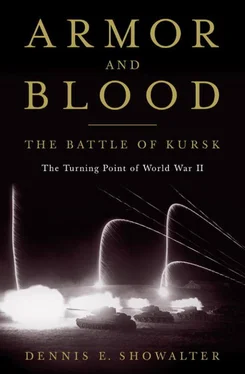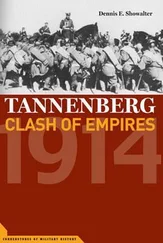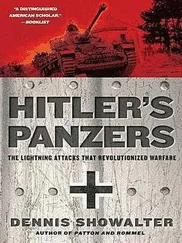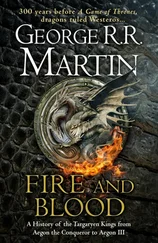For Manstein, that was the necessary first step in restoring the maneuver warfare that was the German army’s great strength—and by now perhaps the Third Reich’s best hope. That restoration had two immediate prerequisites. One was administrative: a united command in the southern sector. The second prerequisite was doctrinal: trading space for time on levels and to degrees unheard of in the Prussian/German military experience. Manstein recognized the latter’s applicability on an unprecedented scale, and he had the intellectual force and the moral courage to convince Hitler that operational exigencies overrode the strategic and economic arguments presented against them. As a result, Hitler authorized a single Army Group South under Manstein’s command.
Encouraged by Little Saturn’s initial success, the Soviet high command decided to extend the offensive toward Rostov. This was part of a Stalin-devised grand strategic plan to drive the Germans back across the entire Eastern Front while the winter held and establish an intermediate stop line extending from Narva to the Black Sea.
With Soviet pressure increasing across the front, Manstein oversaw a fighting retreat on a shoestring into the Donets Basin, north of Rostov, shortening the arc of his front while simultaneously preparing a counterattack as the Russians outran their supply and overextended their communications. Forward units were living off the resources they carried for up to two weeks at a time—acceptable for food, less so for fuel and ammunition. Soviet commanders’ contact with higher headquarters was increasingly tenuous—and initiative even at corps level was not a Red Army hallmark. But the prizes that seemed within reach encouraged Stavka to go a stage further.
At the beginning of February, Russian Operations Gallop and Star retook the city of Kursk. Red Army spearheads drove forward, toward the industrial center and transportation hub of Kharkov, where they launched a counterattack. Hitler insisted on giving the city’s defense top priority. And now some of Manstein’s subordinates were unwilling to continue conceding ground on Manstein’s scale. Manstein as a rule receives correspondingly high marks for a second major act of cool calculation: conceding the loss of Kharkov in order to lure the Soviets forward, into a better position for the counterstroke he was preparing.
Manstein did not sacrifice the city in order to recapture it. He saw the loss instead as the unpleasant but acceptable consequence of the few days needed to convince a visiting Hitler of the advantages of concentrating real reserves for a real counterattack. The Führer was dubious enough to consider dismissing Manstein. When Kharkov fell on February 16, the city’s loss seemed to prefigure disaster in the wake of Stalingrad. But the next day Manstein struck, two panzer armies in tandem catching the Soviets off balance. By February 28, the Germans were back on the Donets and a Soviet retreat was turning into a rout. Kharkov was retaken by the SS Panzer Corps, newly arrived in Russia on March 15 after four days’ hard fighting. The German air force, the Luftwaffe, played a vital role, mounting as many as a thousand sorties a day while shifting its emphasis between the two panzer armies. The weather also worked in the Germans’ favor just as they reached the Donets, with the spring thaw, the rasputitsa , setting in and immobilizing Soviet reserves.
The Germans took pride in their comeback, and Kharkov did cost the Red Army half a dozen tank corps and ten rifle divisions destroyed or mangled. Soviet casualties were around eighty thousand. But by Eastern Front standards, both were bagatelles easily made up. For Stavka, and for the field commanders, Kharkov’s consequences lay in what did not happen. The defeat did not shake Russian confidence that the initiative had passed to the Red Army. “Next time!” became an unspoken watchword.
Manstein’s performance between December and March was considerable. Drawing from commanders, staffs, and soldiers the best they had left to give, he achieved a reversal of fortunes that had seemed inconceivable and remains a lodestone to historians and aficionados of maneuver war. “Miracle” is still widely used to describe the event; “genius” is a familiar appellation for its architect. Manstein compared his approach to a tennis player’s “backhand blow”: a difficult shot, but one that when made effectively can mean game, set, and match. Close examination of the sequence of events suggests a better athletic metaphor might be that of a scrambling quarterback in U.S. football—an improvised response to pressure by a defense, avoiding a tackle while looking for an opportunity to reverse the situation.
Manstein’s success in restoring and stabilizing the southern sector of the German front has inspired arguments that Hitler and the high command should have continued the offensive instead of throttling back and preparing for a later climactic battle. The obvious counter is that despite Manstein’s careful stewardship, his army group was fought out by the end of March, needing rest and reinforcement before going anywhere. Indeed, both Germans and Russians were like boxers in the late rounds of a bruising fight: exhausted, punch-drunk, working more from reflex than calculation. The Eastern Front’s fighting line on April 1 strongly resembled its spring 1942 predecessor and accurately reflected the state of play. The game, however, was far from over. “Strongly resembled” does not mean “identical.” The Red Army had driven a hundred-mile bulge around the city of Kursk into the German lines during the winter fighting. The salient’s reentrant, German-held, was just to the north, around Orel. On a large-scale map, the two resembled a large, upside-down S . It was the kind of anomaly no staff planner was likely to ignore.
The armies that drew apart snarling in the spring of 1943 had changed significantly from those that confronted each other at the start of Barbarossa. The Red Army was still in the process of recovering from two disconnects. The most fundamental was institutional. From its early revolutionary days under the guidance of Leon Trotsky, the army had been seen as a major instrument for creating the New Soviet Man. Free from the snares and delusions of the past, this archetype was to be materialist and collectivist in his essence, eager to sacrifice himself for the Soviet system and for Communist ideology. Military service would facilitate and concretize this transformation while simultaneously creating an instrument of war and revolution that would showcase Soviet power and deter Soviet enemies.
Reality was far more pedestrian. Initial concepts of building this army around a core of class-conscious proletarians foundered with the simultaneous military and industrial expansions inaugurated by the five-year plans that began in 1925. The conscript intakes were increasingly composed of poorly educated peasants with negative cultural memories of military service under any system. Ethnic and regional frictions further induced entropy down to platoon level. “Nationalist in form; socialist in content” became in practice another empty slogan.
These tensions were exacerbated by a pervasive scarcity. From barracks to dispensaries to latrines, facilities were comprehensively swamped; everyday life was marginal even by czarist standards. Shortages of uniforms, weapons, and equipment could not be made good by an economy that, especially before the mid-1930s, had more of a civilian emphasis than is generally recognized or conceded. The result was a collective malaise, informed by an attitude of nichevo , which created a culture of minimal compliance: the antithesis of ideological hopes and expectations. Nichevo is usually translated as “never mind” and is presented as a trope of passivity. It incorporates as well a strong element of “F——it; don’t mean a thing”—what the British Army called “bloody-mindedness” and punished as “dumb insolence.”
Читать дальше












